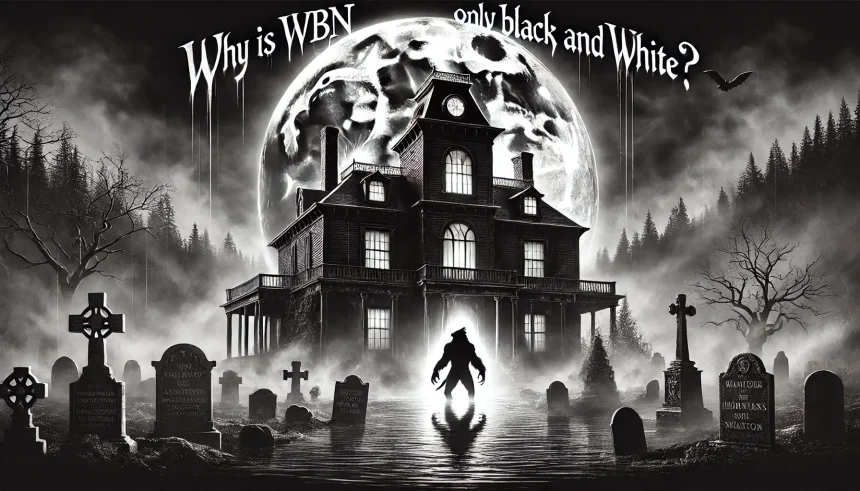Werewolf by Night (WBN), the Marvel Studios special, is unlike most of the Marvel Cinematic Universe (MCU) content. It’s a project that pays tribute to the horror genre by embracing a black-and-white visual style. Many fans wonder, why is WBN only black and white. This decision is not only a bold artistic choice but serves multiple purposes, including evoking nostalgia for classic films, enhancing the atmosphere, and offering a unique viewing experience that stands apart from the usual colorful superhero fare. In this article, we’ll explore why WBN is presented only in black and white and what makes this decision so impactful.
Homage to Classic Horror Films
One of the primary reasons WBN is in black and white is to pay homage to the classic horror films of the early 20th century. Movies like Frankenstein (1931), The Wolf Man (1941), and Dracula (1931) were some of the earliest examples of horror cinema, and they were all filmed in black and white. These films set the stage for modern horror and are often associated with the eerie atmosphere and suspenseful tension that makes the genre so thrilling.
Director Michael Giacchino, who helmed WBN, wanted to recreate that feeling of early horror films. The use of black and white allows WBN to evoke the same mood and tone of these vintage classics. The lack of color brings back the same visual style seen in these early films, where shadows and lighting played a crucial role in creating suspense. This aesthetic choice allows the audience to experience the same kind of eerie, nostalgic atmosphere that was prevalent in horror films from the 1930s and 1940s, making WBN feel like a love letter to that era.
Enhancing the Atmosphere and Storytelling
Another important reason behind the decision to use black and white is to enhance the overall atmosphere and storytelling of the special. Horror films often rely on lighting and shadows to create tension, and black-and-white cinematography is perfect for this. The high contrast between dark and light elements in the frame makes the story feel more mysterious and unsettling.
The special is packed with supernatural and horror elements, and the absence of color amplifies the sense of danger and unease. Without the distraction of vibrant colors, viewers are forced to focus on the shadows and textures, which are more pronounced in black and white. The lighting becomes a storytelling tool in itself, as the filmmakers use it to shape the mood and guide the audience’s emotions. For example, the werewolf transformation scenes become much more dramatic and intense because the shadows highlight the grotesque nature of the transformation without relying on the shock value of vivid colors.
The black-and-white style also creates a timeless quality for WBN. The story feels like it could exist in both the past and the present, as the monochrome visuals keep it grounded in the rich history of horror filmmaking while still being accessible to modern viewers.
Easing the Impact of Violence and Gore
While WBN is a horror special, it does not rely on the extreme violence or gore that many modern horror films are known for. One way the filmmakers achieved this was by opting for a black-and-white color palette. The absence of color helps tone down the graphic nature of the violence. Blood, for instance, is less shocking in grayscale than it would be in full color, reducing the intensity of violent scenes.
Marvel has also made a strategic decision to keep the special accessible to a broader audience. While many Marvel films are rated PG-13, WBN’s black-and-white presentation softens the impact of any gory scenes, ensuring the film doesn’t lean too heavily into graphic violence that would restrict its audience. It’s a smart move that maintains the horror element without crossing over into excessively disturbing territory.
Furthermore, black and white can make violence seem more suggestive than explicit. It allows the filmmakers to create tension through what is implied rather than what is shown. This adds to the psychological horror element, where the viewer’s imagination is just as important as what’s on screen. The special relies on atmosphere, suspense, and fear of the unknown, making it more about the thrill and the terror of the unknown rather than shock factor alone.
Unique Artistic and Cinematic Choice
The decision to make WBN black and white also allows it to stand out in a world where most films are in full color. This artistic choice gives the special a unique identity that differentiates it from the colorful, action-packed Marvel films. Instead of following the usual high-energy, high-budget blockbuster format, WBN becomes something different—something quieter, more atmospheric, and focused on creating suspense.
Marvel is known for its vibrant visuals, but WBN offers a break from the usual formula. It appeals to a different kind of viewer, one who appreciates the slow-burn horror atmosphere and loves the dark aesthetic that black and white provides. By choosing this approach, Marvel was able to offer a film that feels like an experimental project, adding depth and variety to its cinematic universe.
Additionally, the filmmakers used practical effects rather than relying heavily on CGI, which was a nod to the techniques used in early horror films. The physicality of the creatures, including the werewolf transformation, becomes more compelling because of the black-and-white visuals. The stark contrasts between light and dark, combined with the practical effects, help create an authentic horror experience.
Influence of the Comics and Original Werewolf Stories
Another reason the black-and-white style makes sense for WBN is the way it connects to the comic book roots of the character and the legacy of werewolf stories. While Werewolf by Night was originally a color comic when it debuted in the 1970s, many early werewolf stories and comics used heavy shadowing and stark contrasts to create atmosphere.
Werewolf lore is filled with gothic imagery, and black-and-white visuals tie directly into this legacy. The idea of a dark, monstrous creature lurking in the shadows is at the heart of werewolf mythology. The use of black and white allows the special to lean into these themes, showing the werewolf in its most primal, monstrous form without relying on flashy, colorful visuals. It makes the creature more terrifying by focusing on the mystery and danger it represents, rather than its outward appearance.
Conclusion
The black-and-white format of Werewolf by Night is far more than just a stylistic choice. It raises the question: why is WBN only black and white? The decision serves to honor the history of horror cinema, enhance the storytelling with atmosphere and tension, soften the impact of violence, and create a unique and memorable viewing experience.
By stripping away color, WBN immerses viewers in a world that feels both timeless and distinct, offering something fresh for Marvel fans and horror enthusiasts alike. Whether through its homage to classic films, the careful use of shadows, or its restrained violence, WBN proves that black and white can be just as impactful, if not more, than full color in creating a captivating narrative.













